A How-To Guide On Getting Inside Of A Customer’s Brain written by John Jantsch read more at Duct Tape Marketing
Marketing Podcast with Nancy Harhut
 In this episode of the Duct Tape Marketing Podcast, I interview Nancy Harhut. Nancy is the co-founder and Chief Creative Officer at HBT Marketing. A frequent conference speaker and author of Using Behavioral Science in Marketing: Drive Customer Action and Loyalty by Prompting Instinctive Responses.
In this episode of the Duct Tape Marketing Podcast, I interview Nancy Harhut. Nancy is the co-founder and Chief Creative Officer at HBT Marketing. A frequent conference speaker and author of Using Behavioral Science in Marketing: Drive Customer Action and Loyalty by Prompting Instinctive Responses.
Key Takeaway:
Behavioral scientists have studied how people make decisions and what they found is very often people aren’t making these well-thought-out, well-considered decisions. What people are doing instead is we’re relying on decision-making shortcuts, which are these automatic, instinctive, reflexive behaviors that humans have developed over the millennia as a way to conserve mental energy. In this episode, Nancy Harhut joins me to talk about how we as marketers can increase the likelihood that people will engage with and respond to our marketing messages.
![]()
![]()
Questions I ask Nancy Harhut:
- [1:29] How do you define instinctive responses?
- [4:00] Do you ever worry that people might learn behavioral science and create instinctive responses that are not necessarily for good?
- [5:45] Where do you see marketers getting this idea of using behavioral science in the marketing realm?
- [6:46] How do we create emotion so that they get the opportunity to back it up with logic?
- [10:47] A lot of times we will do things to avoid pain or immediate loss before we will do things that are good for us. I’ve heard marketers talk about people will buy painkillers instead of vitamins. How does that one play into a marketer’s ability to get an instinctive response?
- [11:48] Are there positive ways to use scarcity and urgency?
- [13:45] How does reciprocation come into play with humans?
- [17:23] How do you bring some urgency and scarcity to businesses that have a very long sales cycle?
- [19:33] Do you find that any of these techniques or these approaches are more effective visually versus words or stories?
- [21:18] When a client comes to you and they’re struggling with a challenge, do you have kind of a checklist you use, or is every case unique?
- [22:23] One of the things you’ve done in the book is that you kind of break down at the end of the chapter with action steps. Do you also have some checklists and things that people can download as well?
- [23:22] Where can people learn more about your work, connect with you, and get a copy of your book?
More About Nancy Harhut:
- Connect with Nancy on LinkedIn
- Connect with Nancy on Twitter
- HBT Marketing
- Get a copy of her book — Using Behavioral Science in Marketing: Drive Customer Action and Loyalty by Prompting Instinctive Responses
More About The Agency Workshop:
- Apply for the Agency Workshop
Take The Marketing Assessment:
Like this show? Click on over and give us a review on iTunes, please!
This episode of the Duct Tape Marketing Podcast is brought to you by the HubSpot Podcast Network.
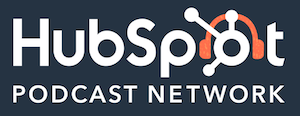
HubSpot Podcast Network is the audio destination for business professionals who seek the best education and inspiration on how to grow a business.

 In this episode of the Duct Tape Marketing Podcast, I interview Debbie Howard. Debbie is the co-founder and CEO of Senior Living SMART, a full-service marketing agency focused exclusively on the senior housing and care industry. Debbie is also a proud member of the DTM network for the last 3 years.
In this episode of the Duct Tape Marketing Podcast, I interview Debbie Howard. Debbie is the co-founder and CEO of Senior Living SMART, a full-service marketing agency focused exclusively on the senior housing and care industry. Debbie is also a proud member of the DTM network for the last 3 years.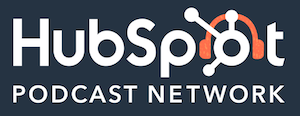
 In this episode of the Duct Tape Marketing Podcast, I interview Becky Blades. Becky is an entrepreneur, writer, artist, and philosopher of creative, adventurous living. Since selling her first company, an award-winning public relations firm, Becky has studied what she has coined “stARTistry,” the art of creative initiative. She’s also the author of a book —
In this episode of the Duct Tape Marketing Podcast, I interview Becky Blades. Becky is an entrepreneur, writer, artist, and philosopher of creative, adventurous living. Since selling her first company, an award-winning public relations firm, Becky has studied what she has coined “stARTistry,” the art of creative initiative. She’s also the author of a book — 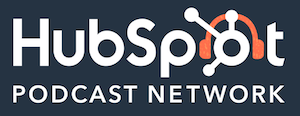
 In this episode of the Duct Tape Marketing Podcast, I interview Laura Goldberg. Laura is the Chief Marketing Officer at Constant Contact. Before Constant Contact, she served as a Chief Revenue Officer for Cabbage, a leading cash flow management and data platform for small businesses acquired by American Express. Prior to that, she was the Chief Marketing Officer at Legal Zoom. Laura has held leadership roles in product and operations with leading e-commerce companies, such as the NFL and Napster.
In this episode of the Duct Tape Marketing Podcast, I interview Laura Goldberg. Laura is the Chief Marketing Officer at Constant Contact. Before Constant Contact, she served as a Chief Revenue Officer for Cabbage, a leading cash flow management and data platform for small businesses acquired by American Express. Prior to that, she was the Chief Marketing Officer at Legal Zoom. Laura has held leadership roles in product and operations with leading e-commerce companies, such as the NFL and Napster.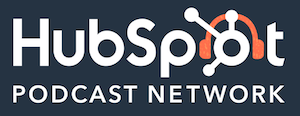
 In this episode of the Duct Tape Marketing Podcast, I interview Carolyn Rodz. Carolyn serves as the co-founder and CEO of Hello Alice. Hello Alice is a free, data-driven, and multichannel platform helping small business owners on their entrepreneurial journey by providing access to relevant funding networks and technical assistance tools while increasing owner success rates. Elizabeth Gore and Carolyn launched Hello Alice with the goal of helping entrepreneurs thrive with access to funding, resources, mentorship, and more.
In this episode of the Duct Tape Marketing Podcast, I interview Carolyn Rodz. Carolyn serves as the co-founder and CEO of Hello Alice. Hello Alice is a free, data-driven, and multichannel platform helping small business owners on their entrepreneurial journey by providing access to relevant funding networks and technical assistance tools while increasing owner success rates. Elizabeth Gore and Carolyn launched Hello Alice with the goal of helping entrepreneurs thrive with access to funding, resources, mentorship, and more.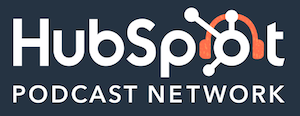
 Air is the leading platform for marketing teams to manage and automate their Creative Operations. Air’s intuitive UI is purpose-built for visual assets. Find files faster with visual search and AI auto-tagging. Share files securely. Fast-track projects and feedback. Teams at Google, Sweetgreen, The Infatuation, and more are saving ten-plus hours a week using Air. Learn more at Air.inc/ducttape.
Air is the leading platform for marketing teams to manage and automate their Creative Operations. Air’s intuitive UI is purpose-built for visual assets. Find files faster with visual search and AI auto-tagging. Share files securely. Fast-track projects and feedback. Teams at Google, Sweetgreen, The Infatuation, and more are saving ten-plus hours a week using Air. Learn more at Air.inc/ducttape. In this episode of the Duct Tape Marketing Podcast, I interview Paul Magnone. Paul is Head of Global Strategic Alliances at Google where he is developing a growing ecosystem of partners that will unlock the next generation of business value via the cloud and related technologies. He’s also the co-author of — Decisions Over Decimals: Striking the Balance between Intuition and Information.
In this episode of the Duct Tape Marketing Podcast, I interview Paul Magnone. Paul is Head of Global Strategic Alliances at Google where he is developing a growing ecosystem of partners that will unlock the next generation of business value via the cloud and related technologies. He’s also the co-author of — Decisions Over Decimals: Striking the Balance between Intuition and Information.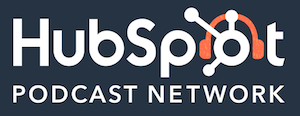
 In this episode of the Duct Tape Marketing Podcast, I interview Carmine Gallo. Carmine
In this episode of the Duct Tape Marketing Podcast, I interview Carmine Gallo. Carmine 
 In this episode of the Duct Tape Marketing Podcast, I interview Ben Congleton. Ben is
In this episode of the Duct Tape Marketing Podcast, I interview Ben Congleton. Ben is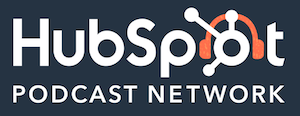
 In this episode of the Duct Tape
In this episode of the Duct Tape 
 Air is the leading platform for marketing teams to manage and automate their Creative Operations. Air’s intuitive UI is purpose-built for visual assets. Find files faster with visual search and AI auto-tagging. Share files securely. Fast-track projects and feedback. Teams at Google, Sweetgreen, The Infatuation, and more are saving ten-plus hours a week using Air. Learn more at Air.inc/ducttape.
Air is the leading platform for marketing teams to manage and automate their Creative Operations. Air’s intuitive UI is purpose-built for visual assets. Find files faster with visual search and AI auto-tagging. Share files securely. Fast-track projects and feedback. Teams at Google, Sweetgreen, The Infatuation, and more are saving ten-plus hours a week using Air. Learn more at Air.inc/ducttape. In this episode of the Duct Tape Marketing Podcast, I interview Jean Hanson. Jean is a Certified Higher Guidance Life Coach, energy healer, and co-owner of Realign Your Life Wellness Center in Mesa, Arizona. Prior to this, Jean and her husband Steve owned two successful companies that helped thousands of business owners through the tools and guidance they provided for their online community. She’s also the author of a new book — Trust Your Higher Guidance: Align Your Life to Manifest the Joy and Success You Deserve
In this episode of the Duct Tape Marketing Podcast, I interview Jean Hanson. Jean is a Certified Higher Guidance Life Coach, energy healer, and co-owner of Realign Your Life Wellness Center in Mesa, Arizona. Prior to this, Jean and her husband Steve owned two successful companies that helped thousands of business owners through the tools and guidance they provided for their online community. She’s also the author of a new book — Trust Your Higher Guidance: Align Your Life to Manifest the Joy and Success You Deserve
